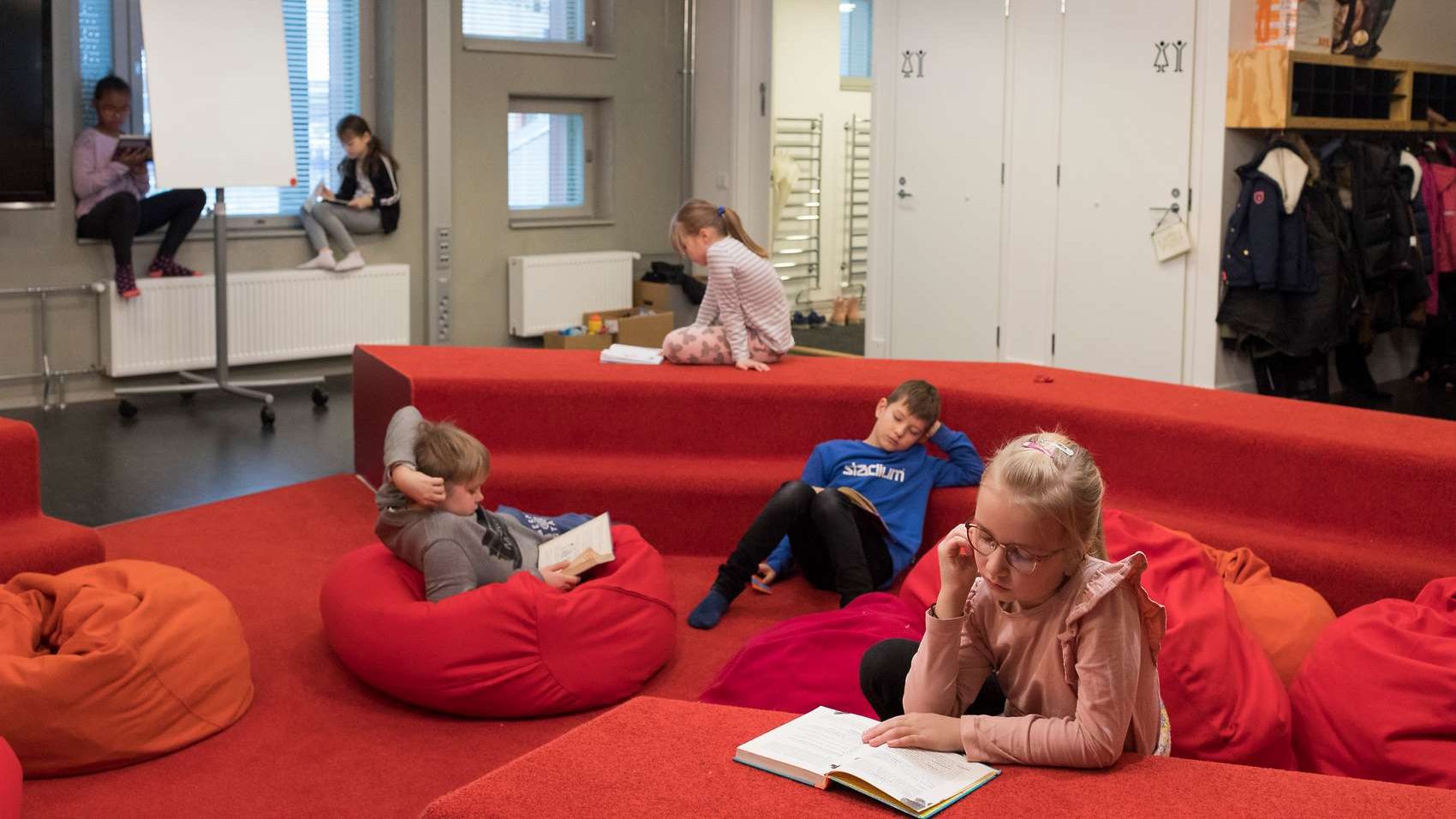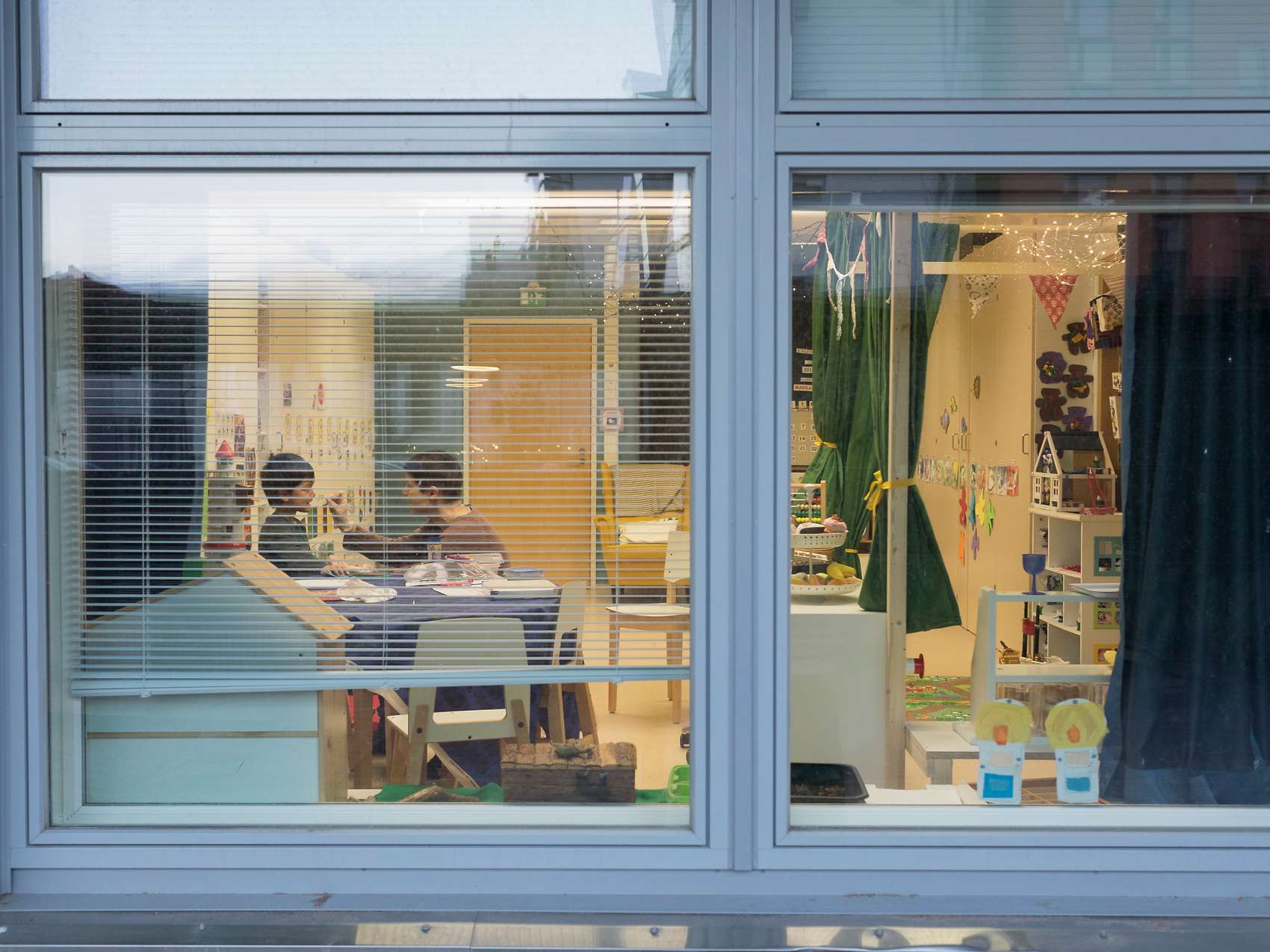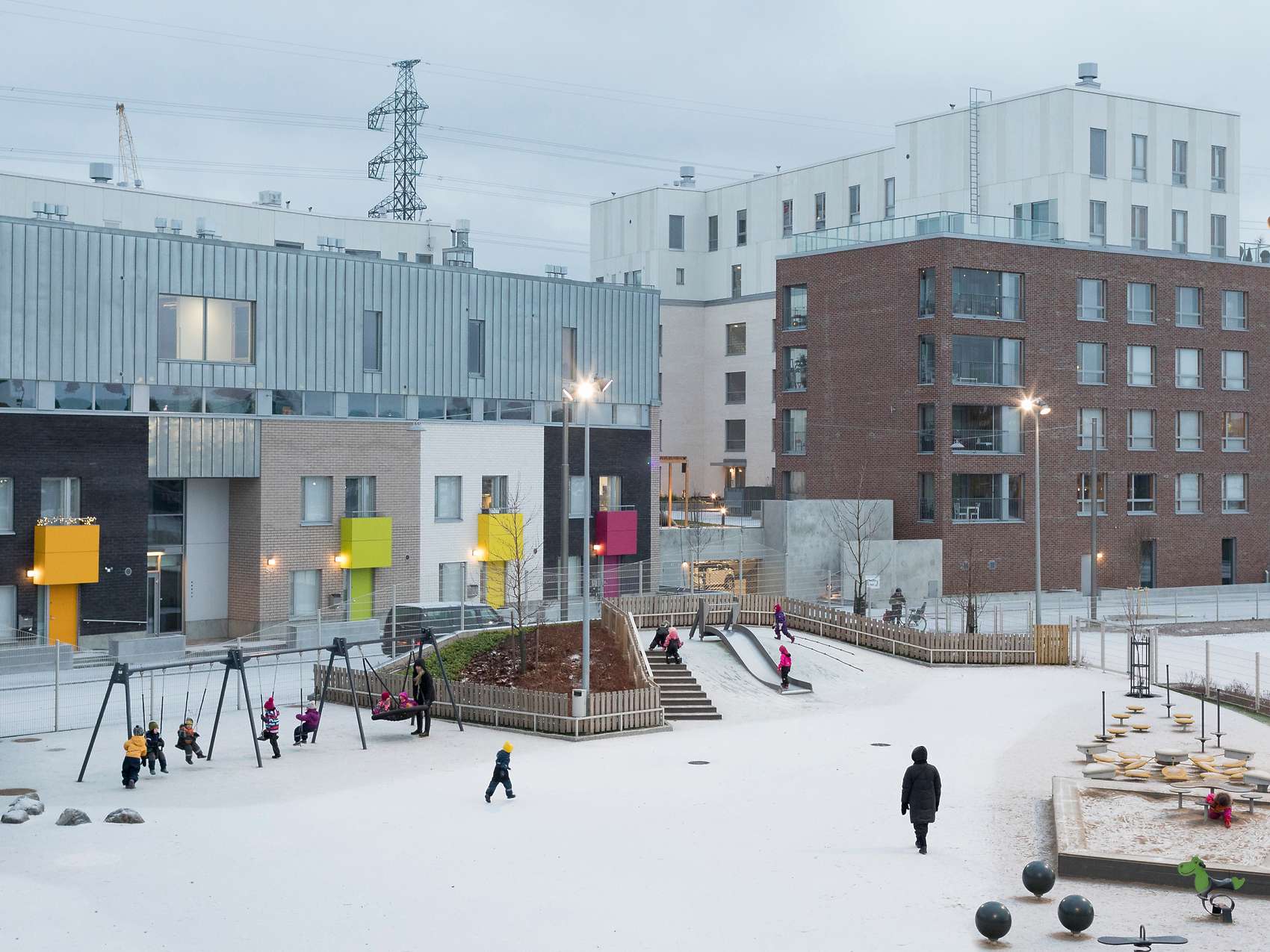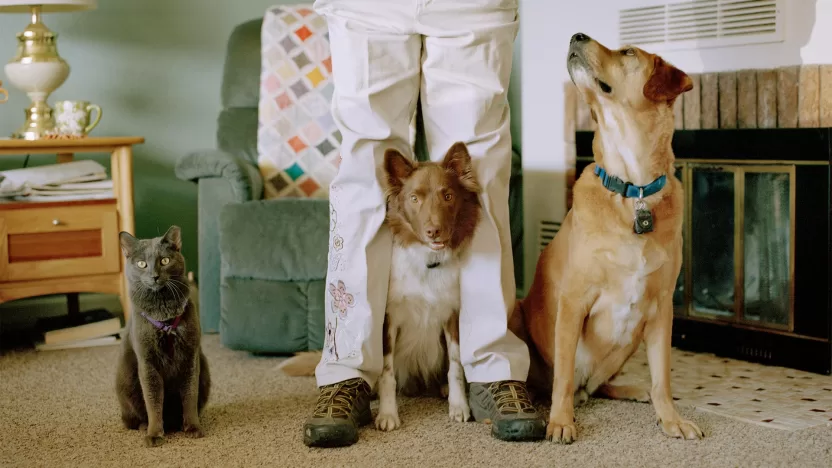The school that doesn’t exist
Where do we cultivate the independent thinking we need as adults to deal with the world? Professor Roberto Guardigli examines the theme.
by Roberto Guardigli

<span style="font-weight: 400;">For many years now, the education system – or simply: “school”– has been showing symptoms of collapse. Over the past year, lockdowns and distance learning – in place for far longer than what was really needed – confirmed a definitive failure: schools, including early childhood schools, have been totally subjected to a policy that uses them to force public health choices that have nothing to do either with education per se or with education and pedagogy in the broadest sense.
During the last century, schools fulfilled the role of eradicating illiteracy, offering cultural opportunities even to children from less fortunate families. However, for at least two decades now, they have lost their function as “social elevators,” molding students more than training them. Of course, the schools of the last century also had the mission of conforming citizens – for example, to a certain view of state or religion – but at least they carried out their role of effectively reducing class differences, offering everyone the tools they needed to climb the social ladder. Nowadays, the conformation enacted by schools involves totally eradicating creative thought, promoting a standardized notion of being human, of science and health (including psychological health), teaching lessons of non-dissent, in a not-so-subtle attempt to suppress any remnant of critical and creative thought in children and young people.
Yet neuroscience has proven that all human beings are born with immense creative potential but that by the age of 18, once their school “job” is over, only 3% of children retain their creative potential. In comparison, the remaining 97% are simply inhibited, becoming more and more hardened in the conventional narrative of science, literature, and the world. So, according to this research, the primary school system should not just provide skills but instead simply not spoil creativity, avoiding doing damage as much as possible. Just as in medical practice: primum non nocere.

A debate on new forms of schooling is underway throughout the Western world. Still, the only genuinely innovative initiatives have come from the private sector, where individuals have set up free schools. Of course, not everything in state-run schools is to be tossed out. We can save decades of experience and a far-reaching organization capable of reaching individual families. But how can we preserve these strengths without slipping into the absolute conformation of human beings to the point of considering them, ultimately, “learning machines” that as such2 could be educated by other machines?
And furthermore, is it possible to create a “universal” school, accessible to all? One that is at the same time, both “free and individual”? A school capable of providing future adults with the tools they need to face a world (of work) in flux and growing exponentially? A system capable of stimulating autonomous thought in children/young people, encouraging an “eroticism” of knowledge?
In other words, it’s a matter of figuring out how to promote a radical turnaround that will curb the cultural decay that we are experiencing. We must ask ourselves what we must leverage to find a turning point? Surely guidance cannot come from people trained in the old methods of “cultural signature”, simply because those trained in the “old” system will tend to reiterate old thought patterns. Those who have been (con)formed within a system and are reintroduced as teachers into that same system will only continue to exercise the power of that specific institution. The philosopher Pietro Archiati says: “What do the powers of this world do, where there is an interest in dominating people to use them as devices for their own purposes? The first thing to do is to forbid them from thinking, to do everything possible so that they do not become independent in their thinking. And this is because people who are independent in their thinking are no longer manageable from outside.”
So, what should we focus on to not lose the good things we have achieved while fostering a positive transformation? I’ll try to answer with a personal experience. I learned to write in elementary school with a nib and ink. The metal nib was dipped into an inkwell, set in a special hole in the upper right-hand corner of each desk. Every week, the janitor would refill all the inkwells in the classroom to the brim using a flask fitted with a thin, curved spout. I don’t remember when I learned the basics of reading and writing, but I do remember – and distinctly – the tall, lanky, deferential figure in a sky-blue lab coat who performed his duties with grim professionalism.
What affected me, apart from learning a skill, was the sensory experience: I distinctly remember dipping the nib into the inkwell, writing within the lines of the notebook, my fingers stained, the blotting paper which, at first soft and unblemished, gradually filled up with dried ink, the smell of the inkwell, the creaking of the nib, the pleasure I felt when, by applying pressure, the two tips spread out and the stroke became wider, making the lettering more elegant. Learning to write that way was not only an intellectual experience but a meditative, almost metaphysical one. There are now avant-garde schools that have eliminated writing on paper as early as the first grade to begin directly with digital writing. That makes me think: wouldn’t it be more innovative to have a school that in the first five years still taught reading and writing with a nib and ink, combining learning, muscle memory, sensory perception, and pleasure in a single natural flow?
My second, more recent personal experience: two months ago, in second grade. I was putting school supplies on the shelves during snack time when a child approached me out of nowhere and, looking at me thoughtfully, asked, “Teacher, why do we come to earth?” No one had ever asked me such a question, least of all in second grade. Nor had I ever addressed similar topics. Instinctively and with deep inner calm, I answered, “To improve ourselves, Andrea. And by improving ourselves, to improve the world.” Andrea shuddered slightly, then looked as if he had calmed down, hinted with his eyes: “Ah, that’s it!” and went back to playing with his friends.
Wasn’t that exchange a fateful moment? A stuttered, superficial answer, but an answer nonetheless. I wonder: what would have happened if I had not answered with a quick wit? What would a hesitation have brought about in terms of the child’s future learning, of trust in teachers? And so, I wonder: in a school that focuses only on basic skills training, or where even in some instances human teachers are replaced by machines, would Andrea’s question have had any place? I’m afraid not.
Third personal experience. In fourth grade, were dealing with the lives of animals. As always, after the presentation of an animal, we drew pictures of it. The children would draw in their zoology notebooks, while I made a picture with colored chalk on a traditional blackboard. When Giovanna had finished drawing the wolf, she raised her hand and asked me to check her work. As I observed her drawing, trying to give her some tips to improve it, she carefully examined my drawing on the blackboard and said, “Teacher, your wolf is cross-eyed.” I turned to the blackboard, looked at my wolf’s eyes, and realized that Giovanna was right. “Which one would you fix?” I asked. She was puzzled. So, I walked over to the blackboard and covered one of the wolf’s eyes first and then the other: Giovanna brightened, “You need to redo the left one!” “OK, can you handle that?” Giovanna excitedly headed to the blackboard, grabbed the chalk, and got to work. In the end, my wolf definitely improved.
Now we can ask ourselves: with a state-of-the-art interactive whiteboard, I could have shown the class pictures of wolves, but would the children have experienced their drawings as intensely? If I had not drawn the wolf with colored chalk, would Giovanna have noticed the imperfection of the eye in my drawing anyway? Would she have been able to improve it, to the satisfaction of each other and the whole class? Almost certainly not.
Last personal experience. Leonardo was a pupil of mine in an elementary school in Treviso. Today he is 23 years old and studies engineering in Trieste. One morning, in fourth grade, he walked into the classroom. He came towards me determined, almost irritated, without even saying hello, and said, “Teacher, the door to our classroom is no good!”
“What’s wrong with the door?” “It opens inward, and often you bump into someone on the way in. And then it takes up room in the classroom: if it opened outwards, it wouldn’t take up room.” I checked, and he showed me: he was right, the problem was there, before my eyes, every day, but I had never noticed it. If the door, with its standard handle, opened outwards, it would rest in a recess in the wall of the general hall without taking up any usable space and would free up a lot of room in the classroom. Besides, opening outwards is undoubtedly safer. Surprised by the clarity of that observation, I said, “You’re right; it’s just as you say.”

I was stumped because my small creative potential didn’t come up with any solutions. I had simply adapted to a lack of functionality. At this point, I challengingly asked Leonardo, “And what do you think we should do about it?”
In an increasingly determined manner, he said. “If you want, I’ll come with my dad, and we’ll turn it around. We just have to move the hinges. “Turn it?” I asked, carefully examining the door, the hinges, and the room needed to open it outwards. And suddenly, I realized that Leonardo’s proposal was remarkably sensible. “It’s a good idea,” I admitted, “but I don’t know if we have permission from management.” My resistance to change wouldn’t let up; inaction is such a powerful force.
“What do you need permission for? – Leonardo replied – I could come with dad on a weekend when there is no one at school”. I finally gave in: “OK, Leonardo, let’s do as you say.”
This school was managed by the parents themselves, so it was no problem to leave my keys with Leonardo’s father on the understanding that I would get them back the following Monday. And Monday morning, when I got to school, Leonardo was waiting for me with a triumphant expression, standing next to his dad at the classroom entrance. “Look,” he said, opening the door outwards, “it works!” Flawless: a definite functional improvement. His father smiled wryly. Leonardo wore that triumphant look on his face all week long. And even today, at 23 years old, he remembers the whole story very well.
I mentioned this story because there are at least three pedagogical aspects worth examining. The first is that Leonardo, a fourth-grader, had observed something and thought it through well, with an “open mind,” and had clearly stated his observations. But what would have happened if his teacher had not understood the actual lack of functionality of the door and, with a “closed mind,” had refused to check what he had right in front of his eyes every day? Simple: the child would have been left to himself with his ability to understand. That small part of the world – the door and his teacher – would have seemed to him devoid of understandability.
Second point. After having understood, Leonardo acted according to his own feelings. Hence his insistence on changing the placement of the door (children are not subject to inaction). But what would have happened if the teacher, out of laziness, had thought that it was not worth acting upon because, in any case, it would have been possible to teach with a less functional door? Simple again: Leonardo would have experienced a lack of meaningfulness of his teacher and his world.
Last point: in the child’s mind, after having “understood” and “found a meaning,” it was impossible not to take action. On the contrary, one had to move on to concrete action, to doing something. It was necessary to “do something” to the door. But what would have happened if, despite having understood the problem and admitted the need for change, a stubborn teacher had blocked Leonardo because of “bureaucratic issues”? Well, the child would have experienced a lack of “feasibility” in his world, the impossibility of acting to improve it, what is called a lack of manageability. But a teacher had let him know that this problem could not only be understood but that it was meaningful and that he was willing to give him the keys to the school to take care of it.
It is likely that, besides being a pleasant recollection, this experience gave the child a “health reserve” for his future life. It is no coincidence that the psychiatrist and humanist Aaron Antonovsky (1923-1994) posited that understandability, meaningfulness, and manageability are the three cornerstones of “salutogenesis.” After conducting thorough studies on Jewish survivors of concentration camps, Antonovsky’s question had been: why did some individuals, despite having suffered the same deprivations and humiliations as others, find the strength to cope? What bolstered their health and their ability to cope with this terrible experience?

In Leonardo’s case, what was my role as a teacher? Simply that of not putting obstacles in the way. I avoided getting in the way of obtuse institutional bureaucratic procedures, of respect for roles and times. We were not dealing with the institution or the rules, but with the individual. And the individual – in this case, a child – had the opportunity to experience understanding, meaning, and transformative action. The teacher simply did not stifle a meaningful insight but handed him, by mutual agreement with his father, the keys to the school.
After so many years, I still find myself working with elementary school children, who are some of the rowdiest and funniest living beings on the planet. But they are also the most creative humans. In them, school has not yet had time to start the process of conformation by turning off their creative potential. The older I get, the clearer it becomes to me that the renewal of schools involves preserving the creative potential of children. The question is: how? The answer might be: by trying to cultivate, as individuals, three aptitudes that children spontaneously have. The first is what we call an “open mind,” a form of clear, warm attention, a constant presence of mind. We might call the second on an “open heart,” that is, the capacity to listen to the demands of the world and of beings, giving them meaning. Finally, an “open will” that tries to get stifled as little as possible by institutions, by any form of power, be it cultural, religious, financial, or bureaucratic: we call this the ability to act.
So how can schools help a teacher’s work foster creative awareness? It would be enough for it to take a step back as an institution and set itself the goal of promoting individual awareness and development, trusting in the intuition of individual teachers, their vitality of mind, their capacity for empathy, their individual talents, without expecting them to conform to programs, grids, and forecasts. The job of the institution or school must become that of withdrawing the institution and promoting the individual, in all areas and at all levels. To use an analogy with the new cell biology: it is time to recognize that intelligence (“leading”) no longer resides in the nucleus (the institution, the power) but in the membrane, or “periphery” (the individuals).



 in Italy
in Italy